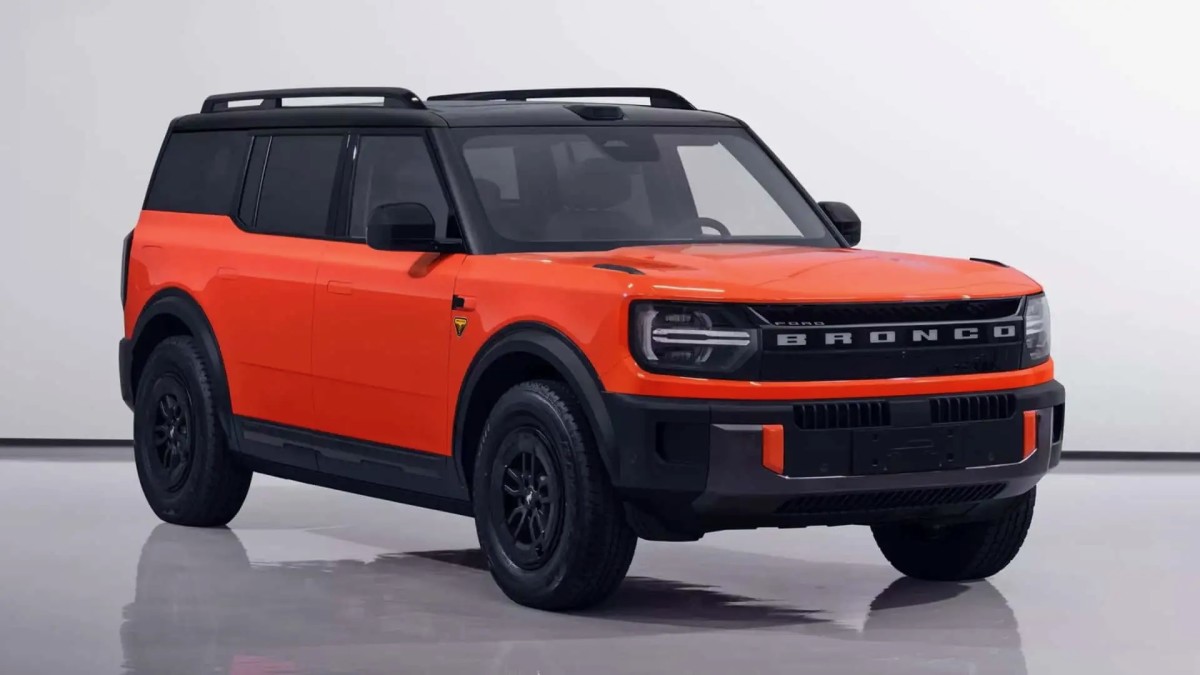Forbidden Fruit Model Shows Potential Of An Electric Bronco For The U.S.
Ford has built out the Bronco nameplate into a family of models encompassing the traditional version and the smaller Bronco Sport—but all with gasoline powertrains. But the Bronco and Bronco Sport are about to be joined by an electric model. You just won’t be able to get it in the United States.
It’s the Ford Bronco New Energy, which will be sold with all-electric and plug-in hybrid powertrains, in China, according to the country’s Ministry of Industry and Information Technology (MIIT). It’s a joint effort between Ford and Jiangling Motors, with batteries supplied by BYD.
“New Energy” is as good a name as any for an electric Bronco, as “new energy vehicle” is how China refers to EVs, extended-range plug-in hybrids, and other low-emission powertrain technologies.
Not Much In Common With U.S.-Spec Broncos
Ford
View the 3 images of this gallery on the
original article
The Bronco New Energy measures 77.0 inches wide and 197.0 inches long, with a 116.1-inch wheelbase, making it 1.1 inches wider than a base U.S.-market Bronco (the Bronco Raptor is a bit wider thanks to its expanded track and fender flares). The American Bronco has the same wheelbase, but it’s 7.6 inches shorter overall.
Like the smaller Bronco Sport, the Bronco New Energy is a unibody vehicle. The all-electric version is rated at 271 horsepower and uses a 105.4-kilowatt-hour battery pack to achieve 404 miles of range on China’s CLTC testing cycle. The plug-in hybrid version has a 1.5-liter gasoline engine and 43.7-kWh pack, good for 241 hp and an estimated 137 miles of electric range.
Those battery packs make the Bronco New Energy heavier than its internal-combustion counterparts. The plug-in hybrid version tips the scales at 5,535 pounds, while the all-electric version weighs 5,800 pounds. For comparison, a Bronco Raptor—heaviest of the breed—weighs 4,945 pounds.
Ford’s U.S. EV Strategy Still In Flux
Ford
View the 2 images of this gallery on the
original article
The Bronco New Energy is expected to go on sale in China later this year with a base price of 300,000 to 400,000 yuan. That’s about $42,000 to $55,000 at current exchange rates. Whether the U.S. will ever see an equivalent model remains unclear.
While Ford remains committed to EVs in the U.S., including moving ahead with plans to manufacture batteries here, the automaker has been vague on future product plans. Last year Ford canceled a three-row electric SUV and delayed production of a next-generation pickup codenamed T3, ostensibly to focus on hybrids and less-expensive EVs. But it still hasn’t detailed any new models, leaving the Mach-E, F-150 Lightning, and E-Transit van as its only offerings in this market.